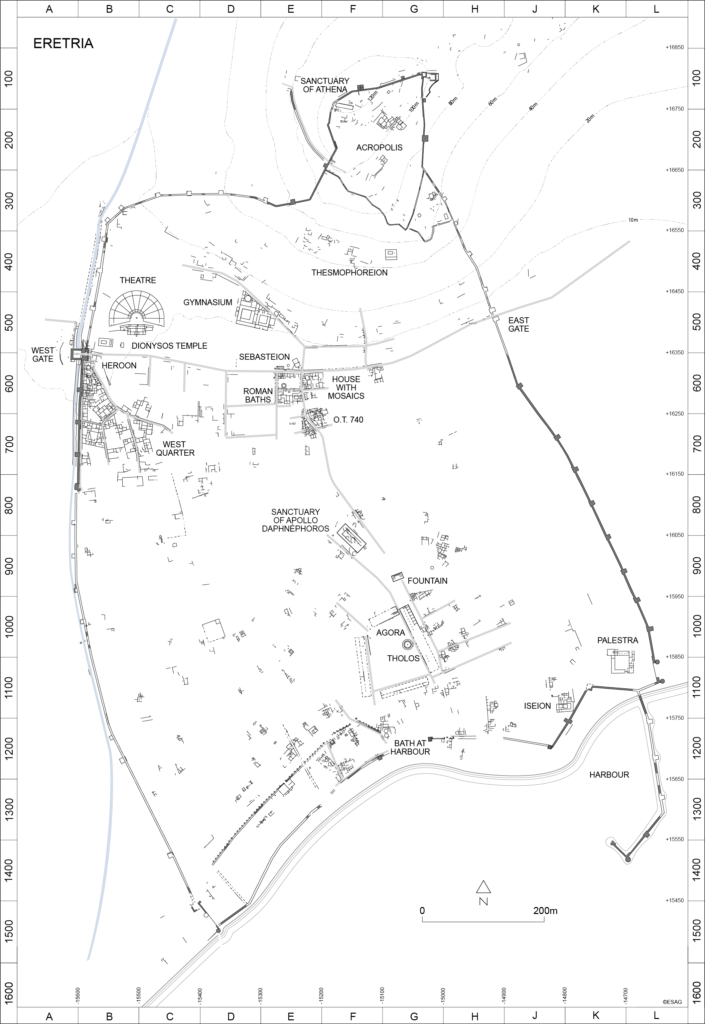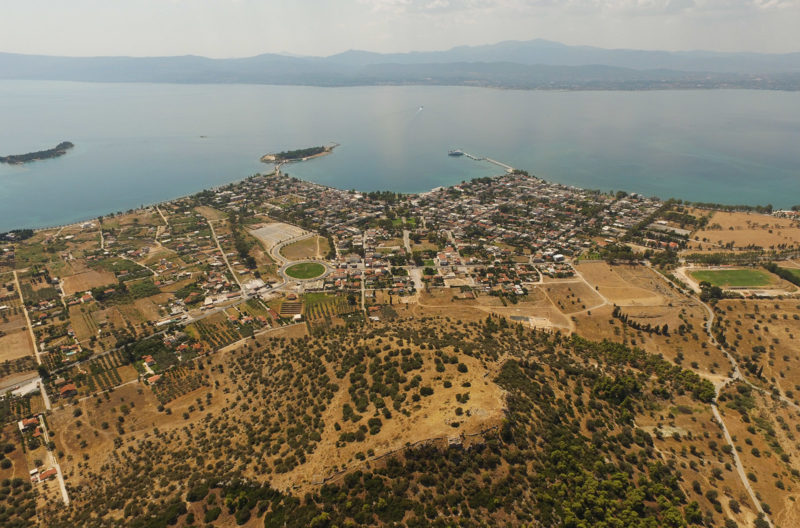Eretria
Storyline
Important city of the Ancient Greece, Eretria has a rich past beginning in the Bronze Age. It was one of the first to explore in the 8th century BC the eastern and western shores of the Mediterranean where it founded colonies and trade posts. As a bridge between East and West, its contribution was essential to the spread of the Semitic alphabet and of the Oriental religions in the Occident.
A colonial and commercial power, Eretria took part to the many struggles that were shaking Greece: looted by the Persians in 490 BC, it enjoyed a flourishing period during the 4th and 3rd centuries BC where numerous rich houses were build.
Taken by the Romans in 198 BC, Eretria’s influence decreased slowly until late in the 6th century AD when all traces of human activities on the site disappeared.
Occasionally visited by travellers and antiquarians during medieval times, the city was restored in the 19th century to provide a new homeland for the Greek refugees that were expelled from the island of Psara by the Ottomans. The exploration of Eretria’s rich heritage started more than a century ago and is still ongoing, mainly thanks to Greek and Swiss archaeologists.
Short chronology
BC
- 3000-1100 (Helladic period)
Settlements on the acropolis and on the plain
- 8th century (Geometric Period)
Birth of the city. First temple in the Sanctuary of Apollo
Participation in the colonization of the Mediterranean basin
- 7th century
The Heroon at the West Gate. Ionic Temple of Apollo
- Ca. 600 (?)
Lelantine War
- 550-525
Construction of the city wall, the Agora, and the Doric Temple of Apollo
- 499
The Eretrians support the uprising of Miletos
- 490
Eretria stormed by the Persians
- 446
Athenian domination over Euboea
- 411
Battle of Eretria and uprising of Euboea against the Athenians
- Ca. 400-350
The city walls and the Agora are renovated. Construction of houses in the West Quarter and of the House of the Mosaics
- 377
Eretria joins the Second Athenian League
- 341
Democracy is restored after twentyfive years of tyranny
- Ca. 340-300
Construction of the Theater, the Temple of Dionysos, the North Gymnasium, the Iseion and the South Palaestra
- 295-268
Political career of the philosopher Menedemos of Eretria
- 267
Antigonos Gonatas, King of the Macedonians, seizes Eretria
- 198
The Romans seize Eretria
- 146
The Eretrians remain faithful to Rome during the Achaean War
- 86
Eretria seized by the Romans (War of Mithridates)
- Ca. 20
Construction of the Sebasteion (Temple of the Imperial Cult)
AD
- Ca. 175
Construction of the Roman baths - 211-217
Eretria honors the Emperor Caracalla
- 6th century
The site is abandoned
- 5 April 1436
Cyriaco of Ancona visits the site
- 1834
Refoundation of Eretria: Nea Psara
- 1885
First archaeological excavations (Chr. Tsountas)
- April 1964
Swiss archaeologists launch excavations in Eretria
Plan

Eretria, archaeological plan
